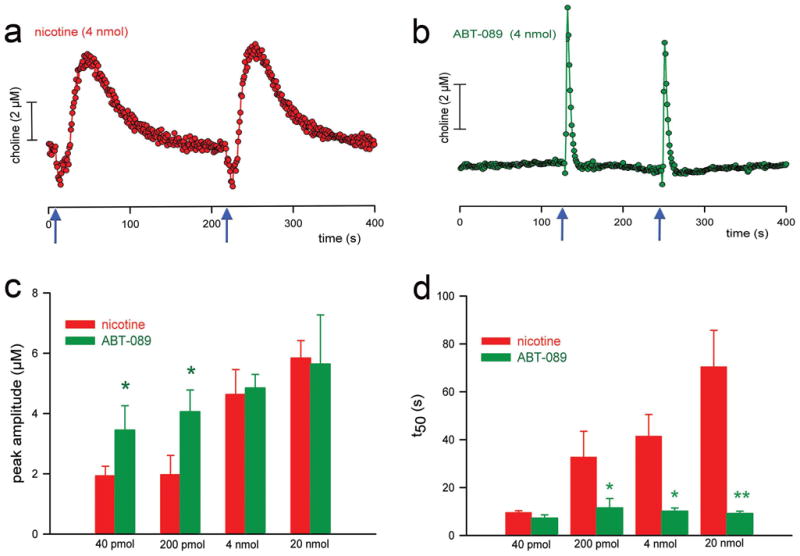Figure 3.

Cholinergic transients evoked by local, prefrontal application (pressure ejections) of nicotine and the α4β2* nAChR agonist ABT-089. (a, b) Self-referenced traces depicting cholinergic transients produced by two pressure ejections (see arrows on the abscissa for timepoints) of nicotine or ABT-089. Compared with the transients evoked by nicotine, ABT-089 was more potent with respect to the amplitudes of the cholinergic transients (c). Furthermore, decay rates of cholinergic transients produced by nicotine were strikingly higher and dose-dependent when compared with ABT-089 (for additional, mechanistic data see [100]). The “sharper” and larger signals of α4β2* nAChR agonists are hypothesized to underlie the more robust beneficial attentional effects of these compounds. (Reprinted from the Journal of Neuroscience, Parikh et al. 2008, with permission of the Journal of Neuroscience/Society for Neuroscience).
